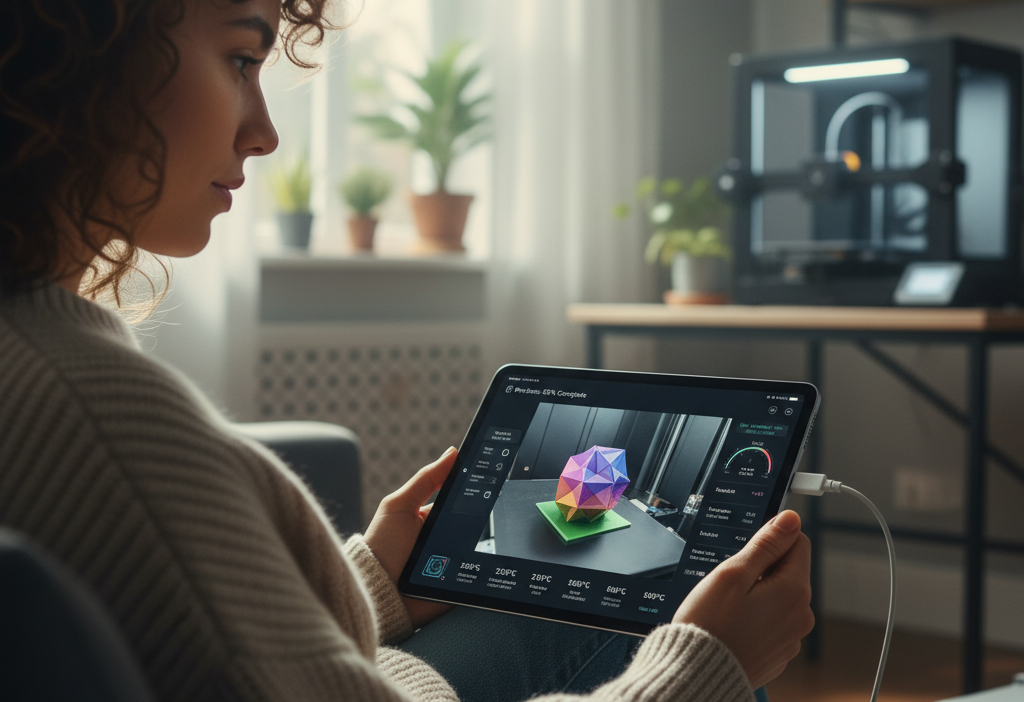Security & Privacy in Remote 3D Printing: Risks and Mitigations




Can innovation in 3D printing outpace the security challenges it introduces? As the industry transitions toward interconnected systems and cloud-managed operations, remote printing has rapidly become a key part of modern manufacturing and education. From global enterprises to school makerspaces, remote connectivity allows teams to upload, slice, and monitor prints from anywhere—creating a flexible and highly efficient production model.
Yet, this convenience carries risk. Remote 3D printing environments often involve sensitive design files, proprietary product data, or user information transmitted across digital networks. Without proper safeguards, these systems become vulnerable to cyberattacks, data theft, or unauthorized control. The ability to print from anywhere must be balanced with the responsibility to secure every layer of the workflow—from file storage to final extrusion.
3D printing has evolved beyond desktop setups and into connected ecosystems. Modern printers communicate via cloud servers, mobile apps, and shared dashboards. Each connection point introduces potential exposure. When design files move between multiple users and devices, weak encryption or poor access management can turn a secure network into an open gateway for intrusion.
For businesses, the risks are not just technical—they’re financial and reputational. A stolen CAD file could reveal intellectual property worth millions. An altered print command could compromise product integrity or cause safety hazards in sectors like aerospace or healthcare. For schools and universities, maintaining privacy around student work and project data is equally important, especially when systems process personally identifiable information (PII).
Security in 3D printing is no longer optional—it’s integral to sustaining trust and compliance in a digital manufacturing world.
The most common threats in remote and cloud-managed printing environments stem from a mix of software vulnerabilities, human error, and insufficient network protection.
Even small 3D printing setups face these risks—making awareness and proactive protection critical at every level of operation.
Security breaches compromise systems; privacy breaches compromise people and ideas. In remote 3D printing workflows, privacy extends to every file, user interaction, and print log.
For industrial users, design files often contain proprietary mechanical data that can expose manufacturing secrets if leaked. In healthcare or research, 3D models may include patient-specific anatomy or experimental prototypes, which require compliance with strict privacy regulations such as HIPAA or GDPR.
Even seemingly harmless metadata—like timestamps, usernames, or printer IDs—can reveal project details or trace internal operations. If cloud providers retain excessive logs or share user data with third parties, the risks multiply.
Maintaining transparency over who has access to files, how long they’re stored, and where they’re transmitted is essential for protecting intellectual and personal privacy.
Building a secure remote printing system starts with layered defence. The following practices address both technical and procedural protection:
Combining these safeguards forms a strong foundation for risk mitigation—protecting both data and equipment integrity.
Organizations handling multiple users and printers need consistent, enforceable policies. Some best practices include:
By standardizing security and privacy protocols, institutions can safely scale remote 3D printing without losing control over data integrity.
A secure cloud ecosystem like 3DPrinterOS brings these practices together in a single, user-friendly platform. It offers remote 3D printing management with built-in security layers that protect both data and devices.
Files uploaded to 3DPrinterOS are processed in encrypted sessions, ensuring that sensitive designs remain protected throughout the slicing and printing process. Role-based access allows administrators to control permissions for students, engineers, or operators—reducing internal risk.
Additionally, all communications between browser, server, and printer are secured with TLS encryption, preventing interception or tampering. Real-time monitoring dashboards allow for visibility across multiple printers, helping teams detect irregular behavior early.
By combining operational efficiency with enterprise-grade security, 3DPrinterOS makes it possible to manage entire fleets of printers while maintaining compliance and peace of mind.
As additive manufacturing continues to merge with IoT and AI, new security challenges will emerge. Printers will exchange more data autonomously—between sensors, predictive analytics tools, and remote operators. This automation will demand self-defending systems that recognize and neutralize anomalies instantly.
Future platforms are expected to adopt blockchain verification for design authenticity, decentralized identity systems for access control, and AI-driven risk detection. Instead of securing individual machines, cybersecurity will extend to entire production ecosystems where digital and physical assets coexist seamlessly.
Organizations that start prioritizing data security now will be better prepared for the next wave of connected manufacturing.
The promise of remote connectivity is freedom—freedom to design, collaborate, and manufacture without limits. But with that freedom comes the responsibility to protect data, systems, and users. Whether managing a single printer or a global fleet, maintaining security in 3D printer remote control environments ensures trust and continuity.
3DPrinterOS enables that balance. Its secure cloud-based infrastructure supports encrypted workflows, access control, and centralized monitoring—all designed for safe, scalable digital manufacturing.
Print smarter and safer with 3DPrinterOS—secure remote 3D printing built for innovation without compromise.
Also read:
How Remote 3D Printer Management Improves Productivity

Learn more about 3DPrinterOS - the most trusted 3D printing management software for Higher Education, Enterprises and OEMs. Fill out this form to get in touch with our experts.
Manage the workflow and permissions for your users
Share files and 3D printers to groups of users
Control your 3D printer fleet through a browser
Cloud slicer and toolpath viewer
Book your personalized assessment now and get your free trial.